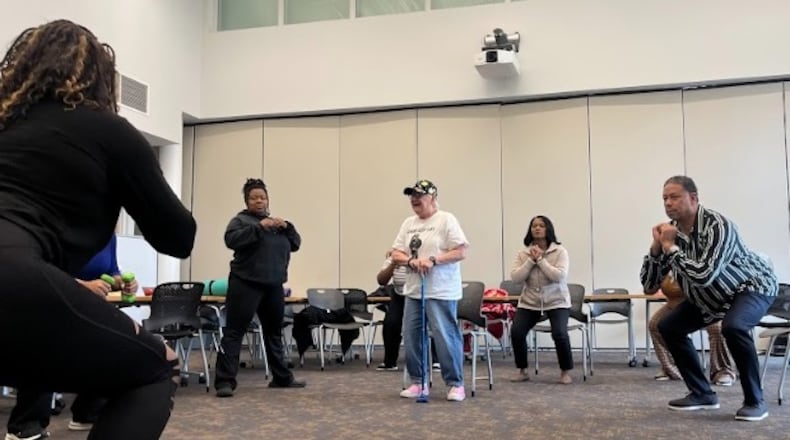The program seeks to reduce the number of Black residents who have high blood pressure. High blood pressure can damage arteries by making them less elastic, which decreases the flow of blood and oxygen to the heart and leads to heart disease.
“It’s designed to prevent hypertension. Hypertension in the African American community is at higher rates across the board in the country, so the program is to help prevent the hypertension before it starts,” said Amy McAllister, health education specialist at Public Health.
High blood pressure is more common in non-Hispanic Black adults (56%) than in non-Hispanic white adults (48%), non-Hispanic Asian adults (46%), or Hispanic adults (39%), according to the Centers for Disease Control.
Black Americans face unique social and environmental factors including lack of access to health care and healthy foods and limited places to exercise, contributing to the inability to manage blood pressure, Public Health said.
The PACE program provides education, exercise lessons and nutrition and cooking demonstrations, McAllister said. Public Health partners with Mission: Fit for the exercise classes and Kettering Health on the nutrition classes.
The fitness courses are designed so that anyone, no matter their exercise abilities, can do them, she said. If participants successfully complete the program, they can get a free slow cooker or air fryer, which are used for the recipes they learn.
“We try to make the class fun and engaging for the participants as much as possible,” said Tif Huber, chronic disease prevention senior manager at Public Health.
The first cohort of classes took place in September and the next cohort kicks off in January.
Since the PACE Program is focused on prevention, anyone who is 18 and older who has been told by a physician that they have high blood pressure is not eligible to participate. Those eligible are Montgomery County residents who do not have high blood pressure.
The PACE program is set up in three stages:
- Stage 1: pre-registration, followed by a health screening and self-reporting and knowledge survey.
- Stage 2: A six-week heart education class, with physical activities and cooking/nutrition classes. The class meets once a week for 90 minutes.
- Stage 3: Completing health screenings and self-reporting and knowledge survey every 90-days.
Stages 2 and 3 each have a monetary incentive for completion. For more information or to register, visit phdmc.org/pace-your-way-to-health.
Facts about hypertension in the United States
In 2017, the American College of Cardiology and the American Heart Association published new guidelines for hypertension management and defined high hypertension as a blood pressure at or above 130/80. Stage 2 hypertension is defined as a blood pressure at or above 140/90.
According to the Centers for Disease Control:
- Having hypertension puts you at risk for heart disease and stroke, which are leading causes of death in the U.S.
- In 2021, hypertension was a primary or contributing cause of 691,095 deaths in the U.S.
- Nearly half of adults have hypertension — 48.1%, or 119.9 million people.
- About 1 in 4 adults with hypertension have their hypertension under control at 22.5%, or 27.0 million people.
- About half of adults (45%) with uncontrolled hypertension have a blood pressure of 140/90 or higher. This includes 37 million U.S. adults.
- About 34 million adults who are recommended to take medication may need it to be prescribed and to start taking it. Almost two out of three of this group (19 million) have a blood pressure of 140/90or higher.
- High blood pressure costs the United States about $131 billion each year.
About the Author


